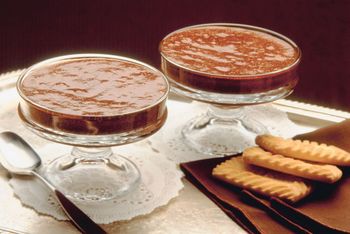How to Make Chocolate
Few sweets have gained such universal liking and notoriety as chocolate has. Being comprised of cocoa solids, fats and sugar, the basic form of chocolate as we know it has become a staple of desserts. It has even been embedded into traditions such as Christmas, Easter, and Valentine’s Day. This delectable cocoa derived food doesn’t have to be purchased from markets and sweet shops only. You can make your own chocolate with a few pieces of equipment and ingredients.
List of Equipment and Ingredients
- Blender
- Food Processor
- Electric Mixer
- Metal or Glass Bowl
- Cooking Sheet
- 1 lb. of Cocoa Beans
- 2 Tablespoons of Cocoa Butter
- 3 Ounces of Powdered Milk
- 3 Ounces of Sugar
- ¼ Teaspoon of Lecithin
Purchasing Cocoa Beans
Because chocolate’s main ingredient is cocoa, the appropriate beans have to be purchased to get the chocolate making process started. There are a variety of specialized chocolatiers and shops that specialize in cocoa beans.
You will be able to choose from several different types of cocoa beans such as Criollo beans, Forasteros beans, Trinitario and Nacional beans. The most commonly used are Forasteros beans. However, the Criollo and Trinitario beans should also be considered. Each type of cocoa beans carries a slightly different taste and aroma level.
Roasting Cocoa Beans
With a cooking sheet, some cooking spray and your 1 pound of choice cocoa beans, you can roast the cocoa beans with the oven in your home. Pre-heat the oven to 325 degrees Fahrenheit and place the pound of beans in to be roasted. Allow the beans to roast for 15-25 minutes while reducing the temperature from 300 over time. You will know when the beans are done as they start to crack – releasing water vapor.
Removing the Husk
Roasted beans still have a husk shell around them. This needs to be removed while preserving the actual bean. For at-home chocolate creation, the best way to remove the husk is by placing the beans onto a cutting board or pan and carefully moving a rolling pin over the beans. Take some time and carefully peel off any remaining husk on the beans.
Cocoa Liquid
Since the beans will cool down when removing the husk, you can cook the beans again for 5-6 minutes at a low temperature setting. With the food processor handy, place the beans into the processor and mix the beans. The mixing and grinding should produce a nice liquid consistency of cocoa after about 10 minutes.
Adding Ingredients

How to Make Chocolate
Conching Chocolate
Conching chocolate is the process by which the chocolate mixture is altered to create those characteristics that are so commonly related with chocolate. Pour the hot chocolate mixture into an electric mixer and set it to a low beater mode. This conching process may take as long as 30 hours.
During this process, it is important to keep the chocolate melted and warm. This can be done by either periodically stopping the mixer then heating the chocolate by oven or by using a blow dryer. Longer breaks away from supervised conching means you’ll have to place the chocolate into a pre-heated oven at 150 degrees overnight.
Tempering Chocolate
With the chocolate now conched, it’s time to do work on another time consuming part of the homemade chocolate process. Luckily, this is one of the very last steps. Tempering chocolate is what makes the difference between a chocolate that has a sheen to it and a chocolate that is dull and overly soft.
For this process, the chocolate content must be set at a temperature of about 100 degrees Fahrenheit. The bowl of chocolate should be kept at this temperature for the entirety of the process. With a spatula, take some of the chocolate and place it on a hard, non sticky surface; a table counter usually does the trick.
Spread and re-compress the chocolate with the spatula for about 10 minutes before adding more hot chocolate from the bowl and spreading and re-compressing again. Once you’ve tempered all the chocolate content, place it back into the bowl that should still have a bit of hot chocolate left in it. Slowly stir the entire chocolate content together and check the temperature. Tempering should be performed until the temperature check is less than 91 degrees.
Finished Product
You can then use molding equipment to turn your chocolate content into whatever shapes and pieces you’d like. Of course, this is not absolutely necessary. Now, the chocolate simply needs time to harden at room temperature before you enjoy your homemade creation.
